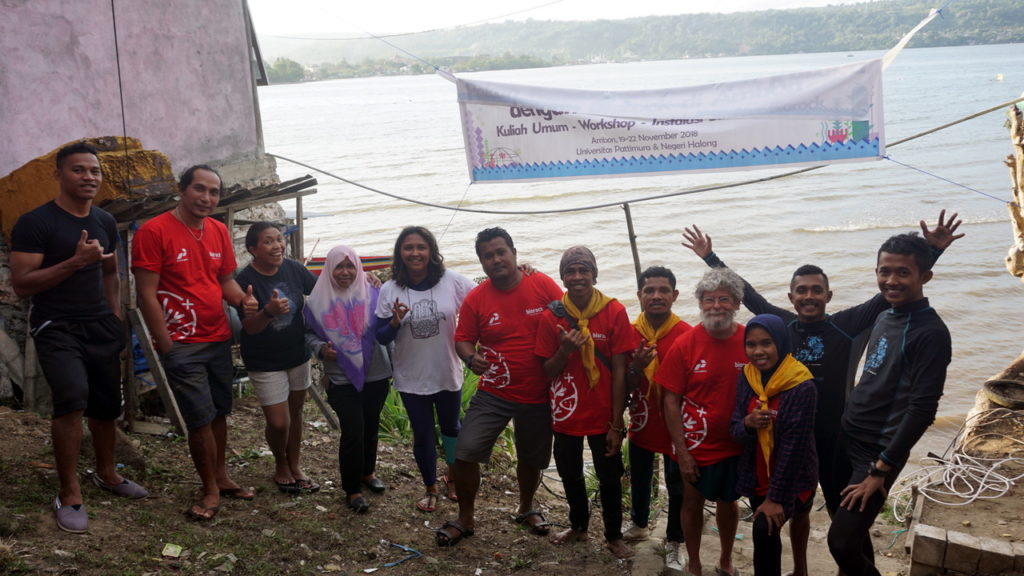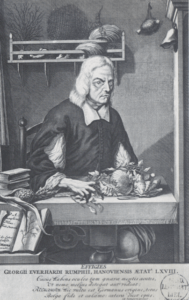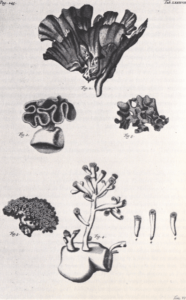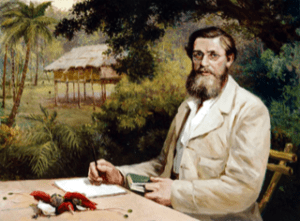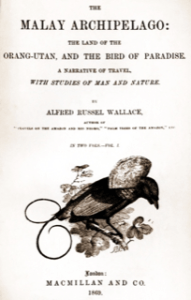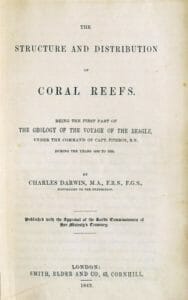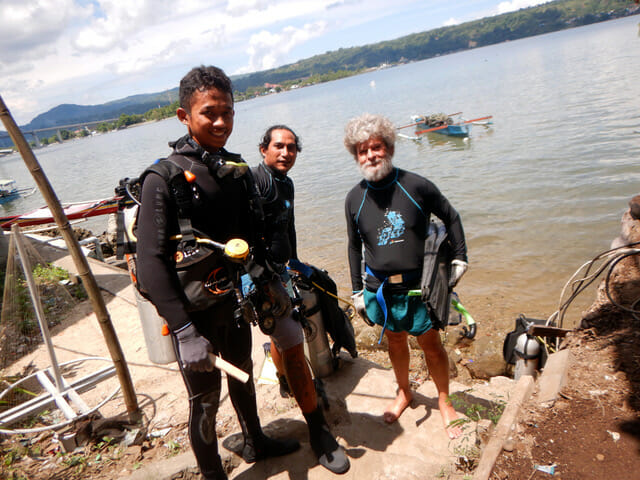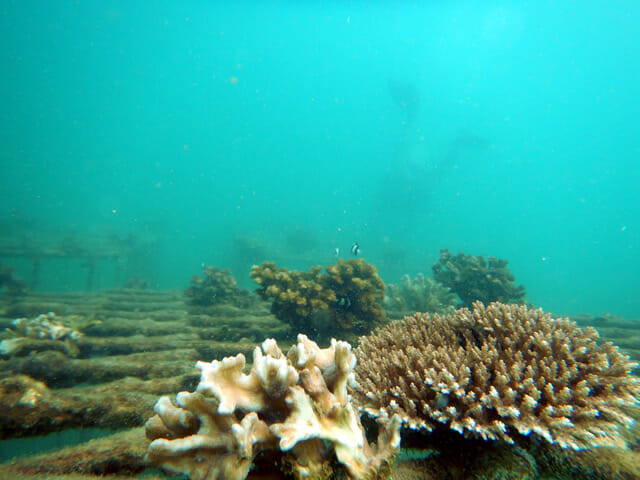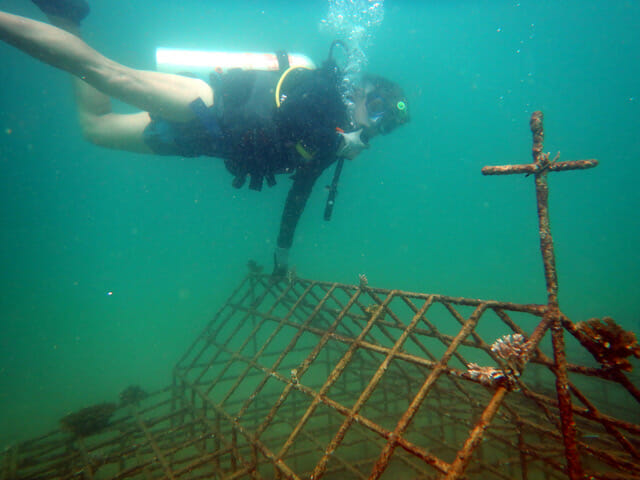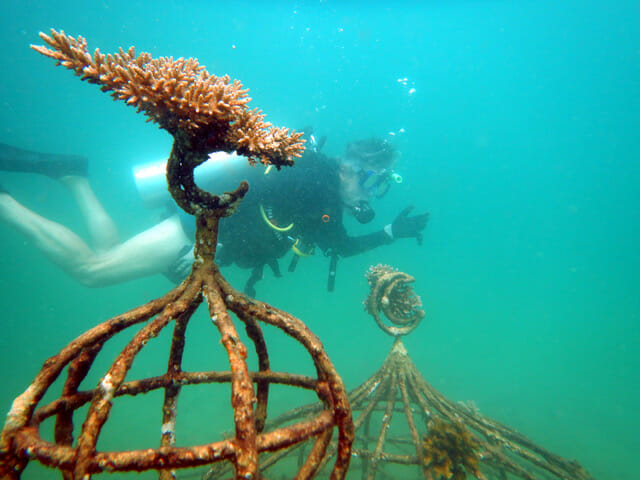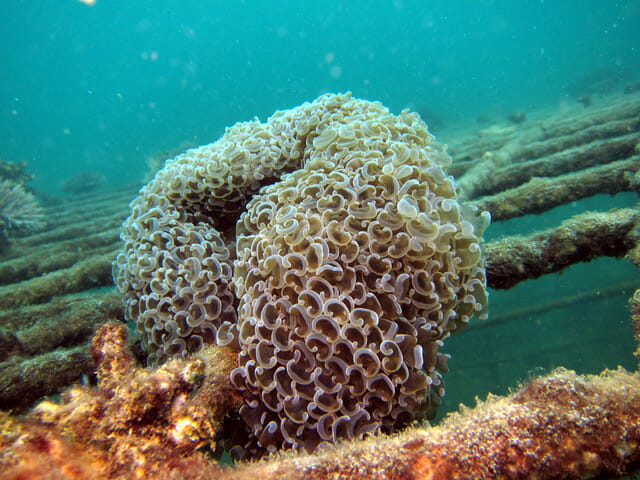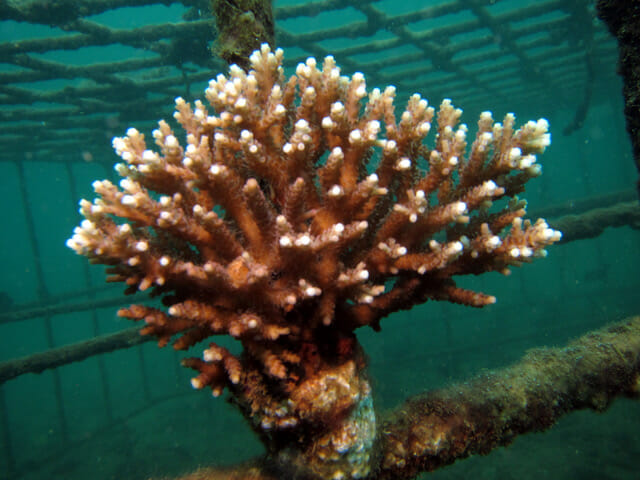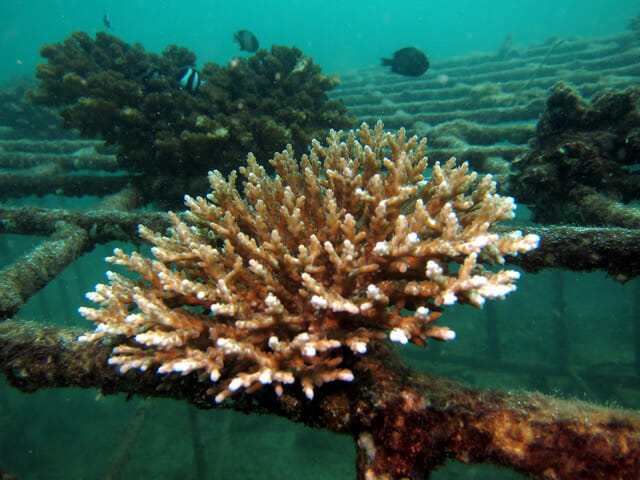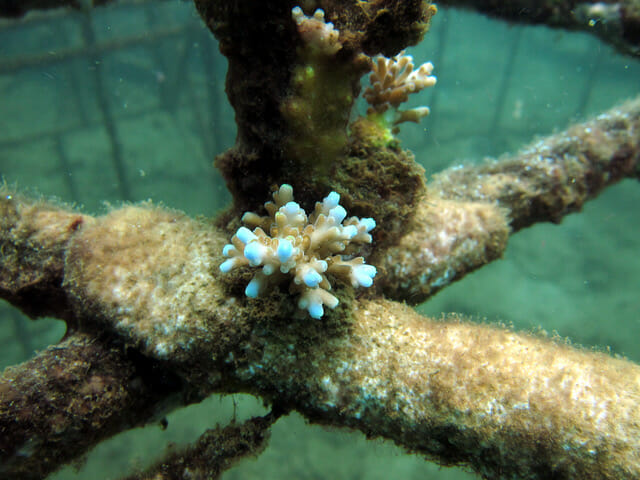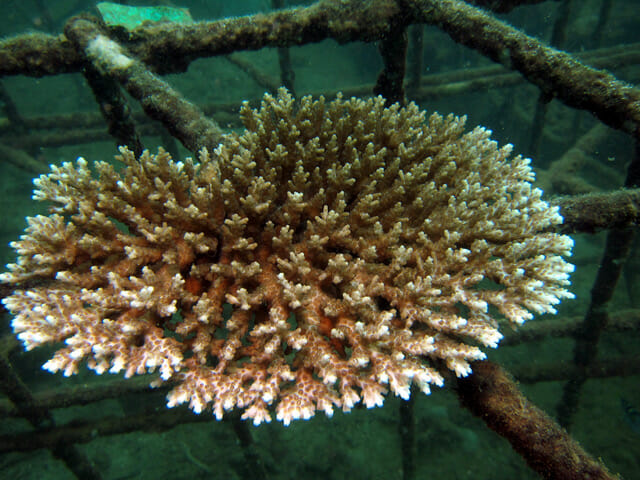The corals of Ambon, in the Moluccas of Eastern Indonesia, were made famous by some of the greatest Natural Historians who ever lived.
In the 1600s Georg Eberhard Rumpf, better known as Rumphius, described hundreds of new species of Ambonese plants and marine animals, including corals, even though he could not see them because he was completely blind and described them by feeling the specimens with his hands.
In the 1800s Alfred Russel Wallace, co-discoverer of the Laws of Evolution, was spellbound by the stunning variety of shapes and colors of corals completely covering the bottom of Ambon Bay.
Even though he never could see them except looking over the side of a boat into the crystal clear waters, Wallace realized from that glimpse that there was as fantastic a world in the reefs as he found in the jungles, and longed to be able to dive like a fish and see them as close up as the birds, mammals, and insects he studied. And so had Charles Darwin.

That only happened when Prof. Thomas F. Goreau became the first diving marine scientist in the 1940s.
Ambon was for centuries a major center of the spice trade. Greatly increased populations cut down the jungles along the shore. Mud, and later, sewage and plastic, polluted the bay and killed almost all the corals (D. Ontosari, P. T. Karissa, M. Tjatur, H. Lating, R. Sudharna, K. Astika, I. M. Gunaksa, & T. Goreau, 2015, Geotourism combining geo-biodiversity and sustainable development of tropical Holocene coral reef ecosystems: Comparison of two Indonesia eco-regions using Biorock technology, Proceedings Joint Convention Balikpapan HAGI-IAGI-IAFMI-IATMI).
Biorock Indonesia, the Maluku Fisheries Department, local fishermen, and students from Universitas Pattimura have been growing Biorock coral reefs in the muddy waters inside Ambon Bay that amazed Rumphius and Wallace back when the waters were transparent.
This project, started by Komang Astika, Prawita Tasya Karissa, and Ruselan Sudharna, managed by Sandhi Raditya, and sponsored by Pertamina, has already stimulated settlement of new branching Acropora corals that had nearly vanished (see photos below).
Here on Ambon nearly 30 years ago Muslims and Christians were killing each other, goaded by outside religious fanatics. Now in this place there are Biorock coral reefs shaped like a church and a mosque, side by side, to emphasize that the environment affects every single one of us, whether we realize it or not, and that we must all work together to regenerate it for the sake of future generations.
More Biorock reefs will be installed in the next few days.
Rumphius and Wallace would be delighted!
BIOROCK AMBON, November 18 2018, photos by Komang Astika and Sandhi Raditya
